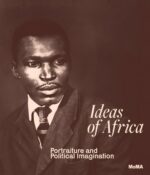Depuis plus de deux décennies, l’artiste-activiste LaToya Ruby Frazier utilise la photographie, le texte, les images en mouvement et la performance pour faire revivre et préserver les récits oubliés du travail, du genre et de la race dans l’ère postindustrielle. Frazier a cultivé une pratique qui s’appuie sur l’héritage de la tradition documentaire sociale des années 1930, les incursions photo-conceptuelles des années 1960 et 1970, et le travail d’écrivains socialement conscients comme Upton Sinclair, James Baldwin et Bell Hooks.
For more than two decades, the artist-activist LaToya Ruby Frazier has used photography, text, moving images, and performance to revive and preserve forgotten narratives of labor, gender, and race in the postindustrial era. Frazier has cultivated a practice that builds on the legacy of the social documentary tradition of the 1930s, the photo-conceptual forays of the 1960s and 1970s, and the work of socially conscious writers like Upton Sinclair, James Baldwin, and bell hooks.




